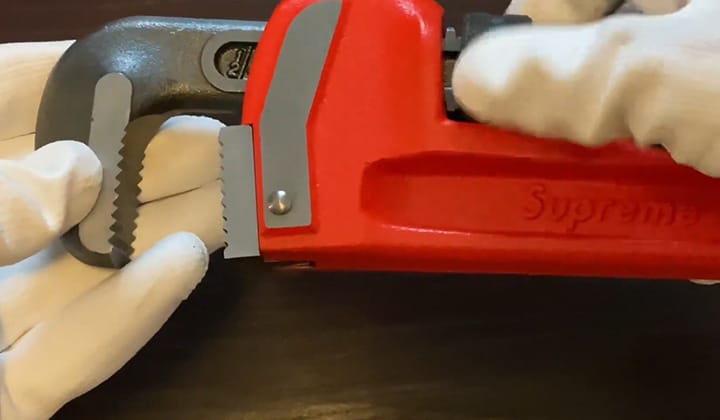I love creating free content full of tips for my readers, you. I don't accept paid sponsorships, my opinion is my own, but if you find my recommendations helpful and you end up buying something you like through one of my links, I could earn a commission at no extra cost to you. Learn more
When you see a pipe wrench here and there, you may think it is a very common tool. But this simple tool has six different types as well as several different sizes. For this reason, before purchasing this kind of tool, you should know how to use one and what type to purchase. We are writing this article today to provide you with the necessary information about these facts.

In this post we'll cover:
What Is A Pipe Wrench?
A pipe wrench is a type of adjustable wrench which is used on pipes. Generally, a pipe wrench is used on threaded metal-made pipes, such as black iron, galvanized steel, and other similar types of metals. If you look at the top of the metal body, two serrated jaws are included there for a grip on pipes. You can simply tighten or loosen these serrated jaws for gaining or losing a grip. However, these two jaws do not move at once, and you can only move the upper one. Taking the upper serrated jaw down will increase the grip by tightening. On the other hand, you need to take the top jaw up for losing the grip and removing the wrench from the pipe. In this way, you can fit different sizes of pipes on your pipe wrench. Let’s have a look at the basic parts of a pipe wrench.- Body
- Nut
- Hook Jaw
- Heel Jaw
- Pin
- Spring Assembly
Process of Using A Pipe Wrench
Before using a pipe wrench on your selected pipe, you need to choose the right pipe wrench to suit your pipe. Because using a small pipe wrench may not give you the grip needed for the desired pipe. Besides, you must select a larger wrench when you need higher torque. After choosing the specific pipe wrench, you can follow the steps below-- Use Eye Protection
- Set The Wrench On Pipe
- Never Remove Your Hand
- Check For Slippage
- Tighten The Jaws
- Put Only Rotational Force
- Always Maintain Balance
- Loosen and Remove The Wrench
Some Tips For Using A Pipe Wrench
If you are also aware of these tips as well as the using process, it will be easier for you to work with the pipe wrench in most conditions.- Always use light force on the pipe wrench since excessive force can damage the pipe.
- Avoid working near high heat areas or such places where a flame is in the nearby area.
- It is recommended not to modify your pipe wrench for reducing the risk of malfunctioning during the work process.
- Never use handle extensions attached to your pipe wrench.
- Don’t use such a wrench that has a damaged handle like bent or twisted.
Final Words
The most important thing you need to consider when you want to use a pipe wrench is to get a perfect-sized tool for your work. When you have the right one in your hand, you can just follow the above steps to enjoy the use process with perfection.I'm Joost Nusselder, the founder of Tools Doctor, content marketer, and dad. I love trying out new equipment, and together with my team I've been creating in-depth blog articles since 2016 to help loyal readers with tools & crafting tips.
